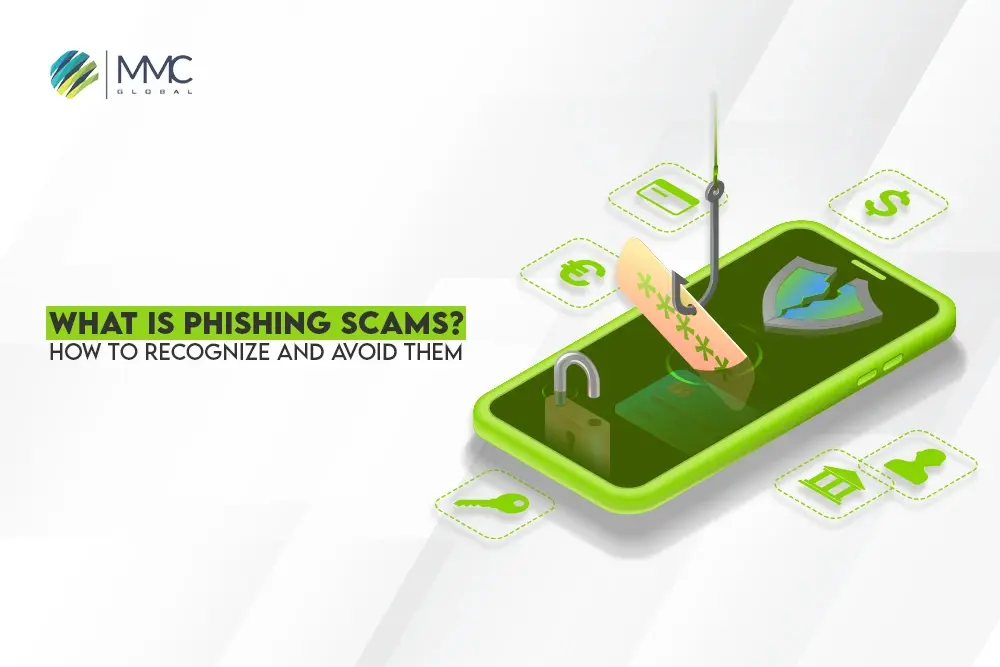What Is Phishing Scams? How To Recognize And Avoid Them


Have you ever been encountered with phishing scams? No matter what your answer is, this blog will be your go-to guide to understand how to recognize and avoid it for the next time.
The digital world is always at risk due to the unethical use of digitalization from scammers. Every year, the number of cyber attacks is increasing and organizations and individuals are bearing the huge financial loss. Phishing scams are one of the most common scams that target individuals and organizations through deceptive activities.
These phishing scams particularly launch through emails, calls, SMS, and suspicious links. Once the desired actions have been performed, scammers easily get access to their desired information. It is reported that around 90% of cyber attacks begin with phishing.
This article will give you in-depth details about phishing scams, including how to recognize phishing, how to protect from phishing attacks, and what to do if you are encountered with phishing scams. Let’s get started!
What is a Phishing Scam?
Phishing scams seem very genuine and unnoticeable as a threat to the victims because they mainly impersonate trusted resources such as banks, government official entities, and social media platforms. There are many types of phishing scams that utilize different techniques to manipulate victims and allow entering malware in systems. Emails, SMS, calls, and unauthorized links are the major weapons which scammers use for phishing attacks.
How To Identify Red Flags To Recognize Phishing
The major prey of scammers is to obtain individuals or organization data to sell it to other hackers, to ask for ransomware, or to access financial accounts. The main targets are critical information such as bank account details, system passwords, and social media accessibility.
Once they get the information, scammers can control and access your bank account, social media, and emails. Scammers upgrade their tactics to launch scams that look genuine to the victim, but here are some successful tactics that turn out to be very effective for scammers.
Phishing emails may include false information or emergency alerts that make you in the sensation of rush, leading to clicking on suspicious links or giving your personal information. These phishing emails seem authentic that come from trusted companies like your bank, payment app, online shopping company, and utility companies. They claim false information, like:
- Inform you about there is a false log-in attempt to your account, kindly click the link to find whom?
- A notification of “Payment declined! Please log-in again to your account and proceed further.” (Although, you haven’t made any payment but user may curious about which payment this email notify me.)
- Ask you to validate your critical information for upgrades like account detail, contact, etc.
- Claim that you are eligible to get a refund or government financial schemes.
These are a few real examples of phishing scam emails that deceive individuals and enter illegally into their personal digital accounts.
Get More Info: 10 life-Saving Cybersecurity Best Practices For All Small Businesses
How To Avoid Phishing Scams Through Email Or SMS
Whenever it comes to security, an extra layer of protection can never be overseen. Gmail already contains spam filtering features that filter out spam emails from the inbox but these scammers are very smart when it comes to target you.
Sometimes, you did not recognize the sender of an email and just to give a check, you open the link and get trapped. Attaching unauthorized links are very common in emails that contain dangerous malware, explicit content, or even false information about your concerned queries.
Here are some very quick tips that can avoid encountering phishing emails and SMS.
- Install a trusted security software that filters out suspicious emails and notify you if you click something mysterious.
- Always enable auto-update of any software and mobile apps to ensure real-time software updates.
- Protect your devices, software, and app with multi-factor authentication security that allows users to ensure identity and access. Multi Factor authentication can be something you only know like passwords, PIN, or answers of security questions. It can be something you have like an authenticator app, one time password (OTP) on your personal phone number or email, asking to do some random actions like open your camera, or get the call.
- Things like face recognition, thumb impression, retina scan, etc.
What To Do If You Respond Any Phishing Scam Email Accidently
If you’ve accidentally responded to a phishing email, it’s important to act quickly to protect your personal information and accounts. Here’s what you should do:
Stop Communication
Immediately stop responding to the phishing email and avoid clicking any links or attachments in the message.
Change Passwords
If you provided login details, immediately change the passwords for any accounts that could be compromised, especially banking, email, and social media accounts. Use strong, unique
passwords for each account.
Enable Two-Factor Authentication (2FA)
Wherever possible, enable 2FA on your accounts. This adds an extra layer of security by requiring both your password and a secondary form of verification.
Monitor Financial Accounts
Check your bank, credit card, and other financial accounts for any suspicious transactions. If you see anything unusual, report it to your bank or financial institution right away.
Run a Virus Scan
If you clicked on any suspicious links or downloaded files, run a full scan using your antivirus software to detect and remove any potential malware or spyware.
Report the Incident
Report the phishing email to your email provider (e.g., Gmail, Outlook) by marking it as phishing. You can also report it to the organization the email was impersonating and to cybersecurity authorities in your country (such as the FTC in the U.S.).
Watch for Identity Theft
Keep an eye on any signs of identity theft, such as unfamiliar bills or accounts opened in your name. Consider using identity theft protection services if you’re concerned.
Educate Yourself
Learn how to recognize phishing emails in the future. Look out for poor grammar, unfamiliar senders, generic greetings (like “Dear Customer”), and suspicious links or attachments.
By acting quickly, you can minimize the potential damage caused by phishing attempts.
Turn your Insecurities Into Opportunities With MMC Global
Getting instant action over phishing scams can help you refrain from bigger challenges. With MMC Global, we provide high end security solutions, including Identity and access management implementation, Managed detection and response solutions, penetration testing, security audit, compliance and regulations, cybersecurity training, and industry-approved security implementations.
With Our cybersecurity service portfolio, we have helped small to large enterprises with our impressive strategies, techniques, and practice. If you want to discuss more details, get in touch with us!



